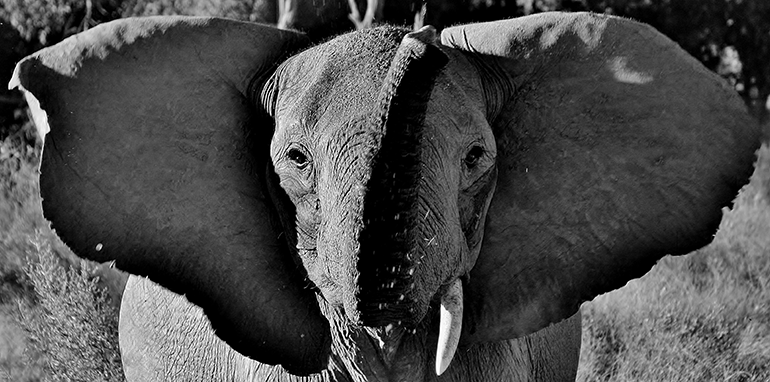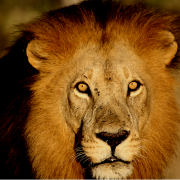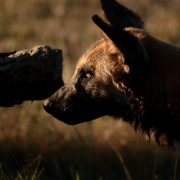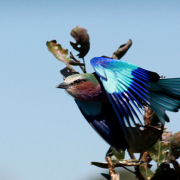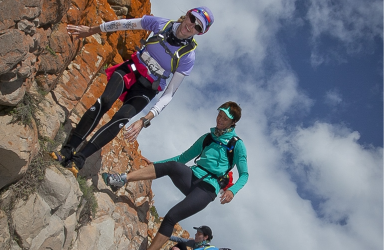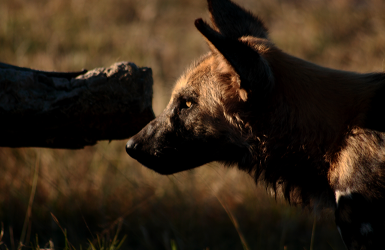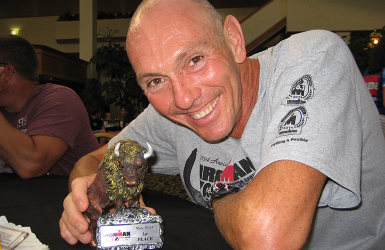INDEX OF CONTENT
Words & Photos: Christopher Green
I had previously thought nature’s best attributes to be exemplified in a dynamic landscape, such as the ocean rising upon itself to crash against a sheer cliff, cloud banks pierced by the setting sun or the mountains towering upwards to be caressed by the morning light.

However, a week on safari in Botswana surrounded by the wonders of the Okavango Delta quickly brought about a change in perception. It did not take long to be struck by the realisation that the beauty of nature does not stop with the splendour of its landscapes; a closer look reveals a profound and intricate beauty concealed in all its layers.
Beautiful Botswana is at times one dimensional in its landscape, especially for someone raised on South Africa’s mountains and oceans. It is almost as though the land knows of this deficiency and has sought to make up for it with a profusion of wildlife. Perhaps best described as a game park with some towns for the human interlopers, Botswana offers the game viewer a unique experience. The areas designated to wildlife are the closest that I have ever come to nature as it would be if untouched by man. Any necessary man-made constructs are as minimalist as possible, with no tar roads and wooden bridges that seem to merge with landscape.
Combine this with a guide for whom this environment has been both home and workplace since childhood and you have the makings of a magical week.
A previous trip into the Delta had given me a glimpse of its treasures and I was eagerly anticipating what was to be a more-complete experience, with three nights in the Khwai Concession area and three nights in Moremi Wildlife Reserve.
I think I can be excused for having low expectations of day one, as the itinerary read, 'Airport pickup and drive to camp'. Enter Disho, who while driving in the fading light noted some recent wild dog tracks on the road. How the guides do this is beyond me, but their ability to notice tracks while driving at pace is a feat they repeat often over the coming week.
Spotting wild dogs, one of Africa’s rarest predators, becomes day one's highlight; not a bad way to start a bush holiday and break the monotony of a long drive. The pack comes to a stop at the edge of some water spread across the road. They strike a dramatic pose, silhouetted against the sunset-dappled water, and then melt into the bush, freeing us to drive on to camp.
Day two finds me up early and eager to hit the trail, and it doesn’t take long for my revised expectations to be met when a call comes in over the radio to tell us that a leopard has been located. What has been a sedate game drive quickly picks up in intensity as we speed to the sighting. After a 20-second wait, a big male leopard casually saunters around the corner, heading towards our vehicle. It then proceeds to give us an exhibition, scraping itself on some small trees as it spreads its scent, marking its territory.
The sound of a growl to the left of our vehicle alerts us to the presence of another leopard and it soon transpires that the two leopards are having a territory dispute of sorts. For those expecting violence it soon becomes evident that they are to be disappointed, as the smaller of the males is sent scampering to a safe distance. However, having established their respective stations in the social order, they soon resume their day's activity. The larger leopard trails behind its smaller counterpart, spreading its scent everywhere that its rival pauses. We follow this interaction until the two leopards settle down for a nap not more than 20-metres apart, and then head off for morning tea, always a feature of the trip and enjoyed with nature on display around us. The drive back to camp is punctuated by a pause to watch an elephant take a mud bath.
Day three dawns and seven thirty finds us in mokoro boats on the still waters of a river channel. With a viewing focus that is significantly smaller, it is the unique perspective offered by the mokoro ride itself that makes it a truly remarkable outing. As you move silently along the water you feel a part of the environment rather than an outsider intruding upon it. It's impossible not to be caught up in the vibrancy and colour of nature as it moves around you; the dynamic colours of the plant and animal life are unreal. There is a profusion of life as birds constantly flitter along the banks and across the water, while others calmly watch you float past. Frogs in a variety of startling colours call from the reeds, while water striders and water spiders dart along the river's surface, leaving ripples in their wake. The water lilies spread across our path lend a sense of completeness to this picture and the silent, gliding motion of the mokoro enhances the experience.
On the late afternoon drive, we come across two large male elephants feeding next to the road. Our guide drives up and stops next to the larger male, while the second elephant wanders over to the other side of the road. We now have an elephant on our left and right, both within 20metres. To my horror, the world goes quiet as Pat, our guide, turns off the engine, unfazed as the larger male ambles closer to the vehicle. As the second elephant saunters off into the bush, leaving me feeling slightly safer but conflictingly missing its awe-inspiring presence, the remaining elephant moves to within 10 metres of the vehicle. Deciding that an acknowledgement of our presence is now warranted, it flaps its ears and takes a step in our direction. Pat quietly and inhumanely calmly tells everyone to sit still and the elephant relegates us once more to a position of insignificance. The engine is turned back on and my lungs resume their work as we drive off.
Day four sees us move to the Moremi Wildlife Reserve, and the sighting of a lioness is the day's highlight. However, I found the most remarkable aspect of this trip to be the enjoyment found in the periods without a 'major' sighting, as the smaller wonders of nature are revealed to us by Pat and Disho. The Delta contains over 400 different types of bird and while we saw more than I can name or recall, it was still only a small portion of the total. The enjoyment gained from the viewing of these birds was compounded by the seemingly endless information that the guides were able to provide on each bird.
Each day brings about a greater awareness of the world surrounding us, as the guides point out smaller mammals, rare and beautiful butterflies or stop at a small body of water to catch a fascinating frog.Plants, beautiful and often unique to the area, are also brought to our attention. My favourite part was the identification of tracks, not just the big game but a remarkable variety including beetles, snakes and ants.
Day five delivers our first proper experience of Moremi Game Reserve. A brisk morning produces immediate excitement as recent lion tracks are found less than a 100 metres from our campsite. It transpires that the lions pass along the road outside our campsite every morning as they patrol the boundaries of their territory. Disho tells us that these lions, two brothers, are looking to expand their territory and tension is building between them and the neighbouring males, also two brothers. It does not take long for the other vehicle to locate the lion, but by this time we are parked and watching a herd of buffalo as they meander past us and are reluctant to leave.
Some time later the roar of a lion alerts us to its position and our vehicle heads into the bush after it. After 5 minutes of bundu bashing we have our first close-up lion sighting. It is the smaller of the two males, but still an awesome specimen of power. Blood on its paw raises the possibility of a confrontation with the neighbouring lions and its frequent *flehmen display indicates that it is trying to locate another lion; we speculate its brother.
Lion seem to be the order of the day in Moremi and the afternoon drive finds us heading over to where the rival lion pride is having their afternoon nap. In a tranquil hour for both parties, we watch the family interactions of the lion pride. One of the large males, the other was not present, sits off to the side while the females and a young male relax and groom each other in the shade.
This peaceful scene is eventually interrupted by the arrival of a herd of buffalo. Immediately, two of the female lions rouse themselves from their slumberous state at the prospect of a hunt, while the acquisition of food does not seem to be of any concern to the male. The females wander over for a closer inspection of their dinner menu, while the young lions quietly move to the side to get a good view of their elders at work. Now aware of the lion, the buffalo close rank, shifting the young to the middle and the bulls move front and centre. The herd continues to wander forward seemingly unconcerned by the fact that their path takes them right into three lionesses crouching in wait. As the lionesses start to advance towards the buffalo herd, the bulls rush forward to meet the challenge. The lionesses quickly realise that they might have been too ambitious in their attempt and beat a hasty retreat.
And so goes the first foray of the night’s battle. The bulls cannot advance too far from their herd because despite the seeming futility of the situation, the lionesses are unwilling to admit defeat. By this stage the sun has set and visibility is poor, so the rest of the night's interaction is viewed by spotlight. We are able to follow a couple more forays as the lionesses advance, only to be sent scampering back by a wall of buffalo horns.
Eventually, both parties acknowledge that their respective shenanigans are going nowhere and the buffalo wander back to the herd while the lion casually stroll off in the other direction.
It's been five glorious days and there is still so much more to discover at Moremi. Be sure to read the next issue for more of our adventures.
*Flehmen is a behaviour whereby an animal curls back its upper lips to expose its front teeth, inhales with the nostrils usually closed and then often holds this position for several seconds. The behaviour facilitates the transfer of pheromones and other scents into the vomeronasal organ located above the roof of the mouth via a duct that exits just behind the front teeth of the animal.
